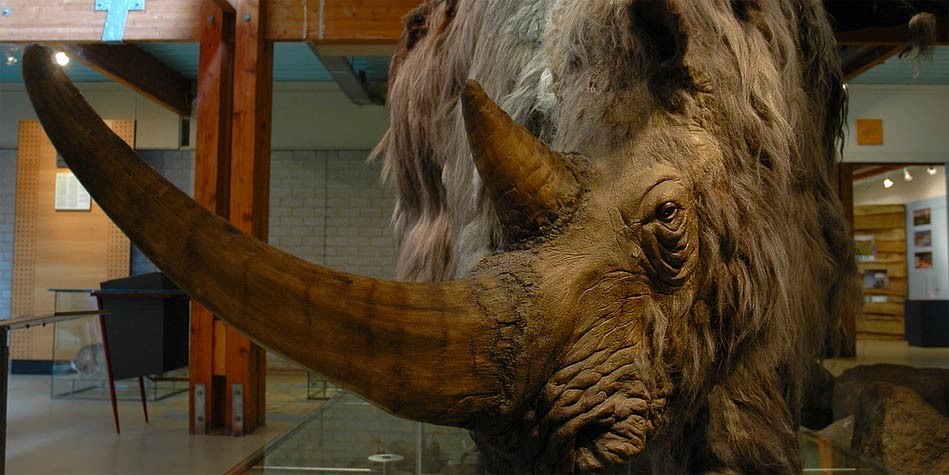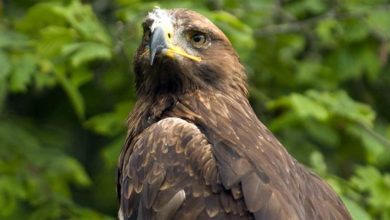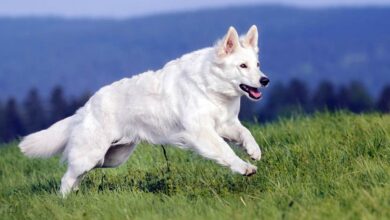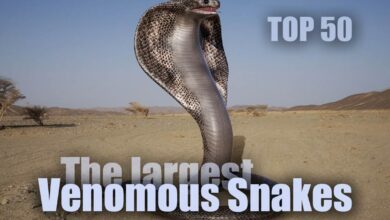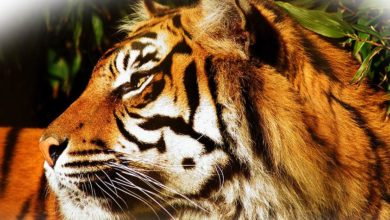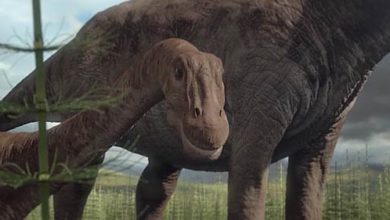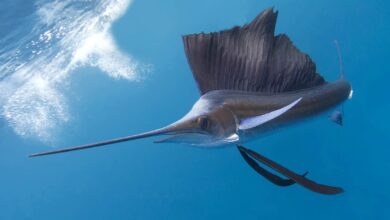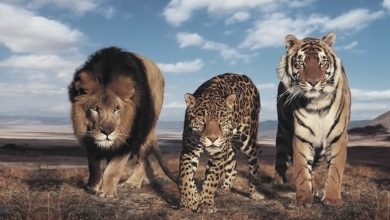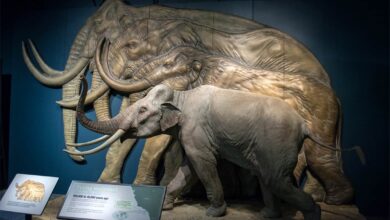Woolly rhinoceros (Coelodonta antiquitadis)
If you want to see a woolly rhinoceros, it is enough to go to… museums :). You could find the woolly rhinoceros in London (the Natural History Museum), in Berlin (Humboldt-Museum) or in the Museum of Natural History in Cracow (Poland). Polish museum exhibits not the skeleton but the real mummified corpse of that Pleistocene mammal.
Thanks to that amazing discovery as well as thanks to finding murals, you could create a very accurate picture of the plant-eating giant which pastured a few millions of years ago on plains in Europe and Asia.
Classification
- Kingdom: Animalia
- Class: mammals (Mammalia)
- Order: perissodactyls (Perissodactyla)
- Family: rhinoceros
- Genus: Coelodonta
- Species: woolly rhinoceros (Coelodonta antiquitatis)
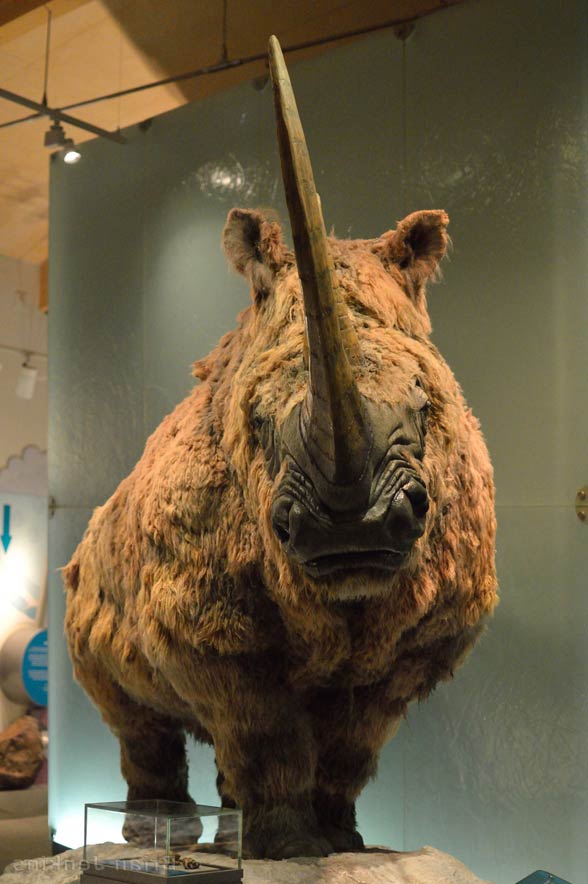
Dating and distribution
Woolly rhinos were mammals that used to live in Europe and North Asia. They prevailed on Earth in the Pleistocene, that is the time of the last glaciation. The oldest discovered remains of the woolly rhino were found in the Himalayas. Their age was estimated at about 3,6 million years ago. It means that the species used to live when the climate on Earth was much more hospitable. It is thought that along with the beginning of Ice Age, woolly rhinoceros emigrated from Tibetan Highland to North Asia and Europe.
Discovery
There have been found some remains of adult animals since XIX century. On the area of current Ukraine, there were found two well-maintained bodies of woolly rhinoceros, though they were not hairy. In the east of Siberia, the mummified body of the mammal without head was discovered.
Remains of calves are extremely rare and fragmented; therefore, there is little known about the young. However, it is supposed that the frequency of deaths among young woolly rhinos was very high. The youngest representative of these species was around 3-4 years old. These estimates were made in the paleontologist institute in Moscow. The animal had two horns on the foreface, each of them was big as a fist and firmly attached to the skull. Nevertheless, it has not been found out what gender the found calf was.
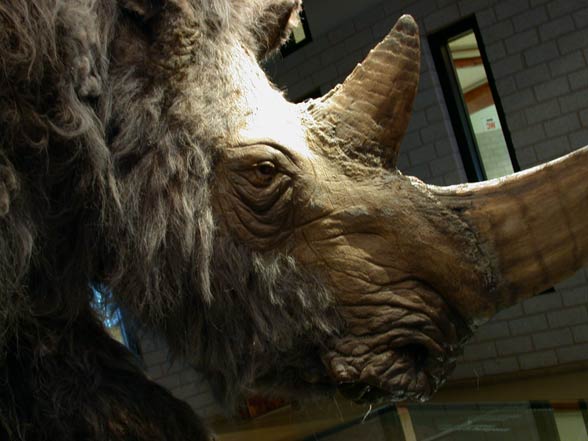
Physical characteristics
Appearance
Scientists did not have to think too much about the appearance of the woolly rhino as cave paintings and mummified bodies of a few animals in Siberia were a great help to them. On their basis, it was possible to estimate that adult rhinos were 3-3,8 m (10-12 ft) long, approximately 2 m (6.5 ft) high at shoulders and their weight was between 1.8-2.7 tons (3,970-5,950 lb). Their body size was comparable then to the size of the white rhinoceros- the biggest modern rhino in the world.
On the foreface, the rhino had two keratin horns, the front one was 6o cm long and the smaller was situated between eyes. Ears were small, legs were massive and short and the body was strong and heavy-set. The most characteristic feature of the woolly rhinoceros was long and thick fur which was adjusted to harsh environment conditions. Their strong legs were very helpful to survive Pleistocene frosts. As Pleistocene climate was not stable, animals were force to migrate during periods of the warming.
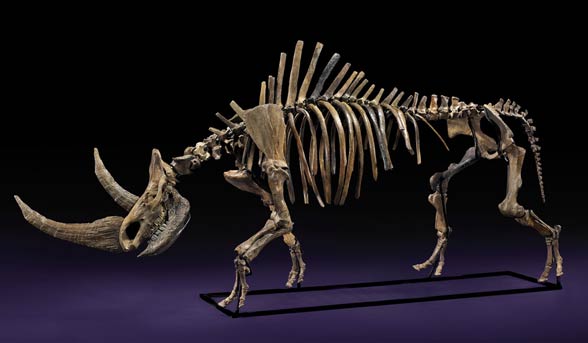
Diet
The environment in which rhinos used to live was not very pleasant and the proof for that is contemporaneous tundra and steppe vegetation. On the basis of numerous analysis, it has been found out that there were many kinds of grass and sedges on the area of rhinos’ existence. Nevertheless, the analysis of the skull and jaws revealed that rhinos used to browse on Pleistocene planes of Eurasia. The evidence for that fact is neck muscles adjusted to that type of the diet. The presence of big gaps between teeth is the confirmation of this theory. Browsing animals need a big amount of food which results in the low content of minerals included in the grass and sedges.
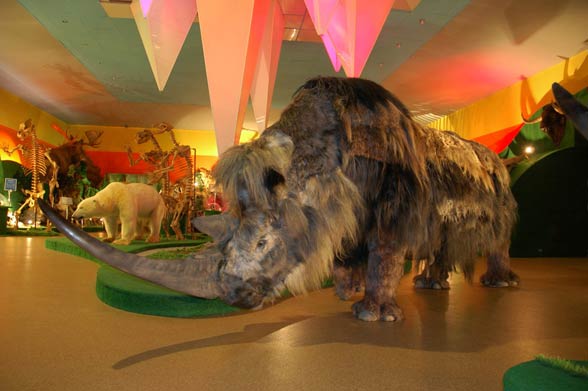
Lifestyle
It is supposed that big horns were used as the weapon against predators and challengers in the fight for females. They could also play a significant role during the advances- the bigger horns, the greater luck. Horns were also used as spades thanks to which they got rid of the snow covering frozen grass.
At the time of last maximum glaciations, the North Sea pulled out to the north and the level of seas was 125 m lower than at present. At that time, rhinos moved along the land massif, Doggerland which connects Great Britain with continental Europe.
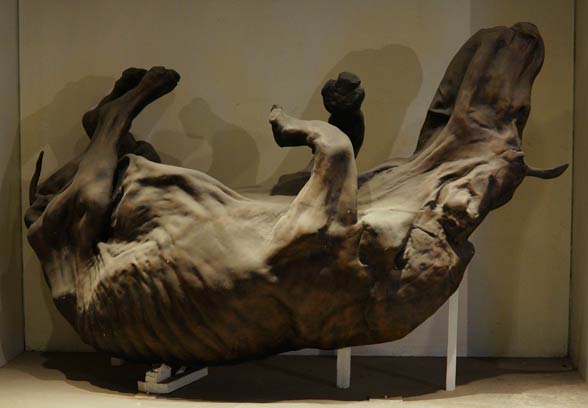
Extinction
Woolly rhinoceros died out almost at the same time period as other species of Pleistocene megafauna. One cause of the extinction is hunting by people. It is also conceivable that the other reason was climate changes which in the case of the woolly rhinoceros could have had the biggest influence on its extinction. It is believed that these species were accommodated to low temperatures although it would have been able to survive in a bit warmer conditions.
Recent research based on radiocarbon dating indicates that last populations of the woolly rhinoceros survived till about VIII century BC on the area of the western Siberia.
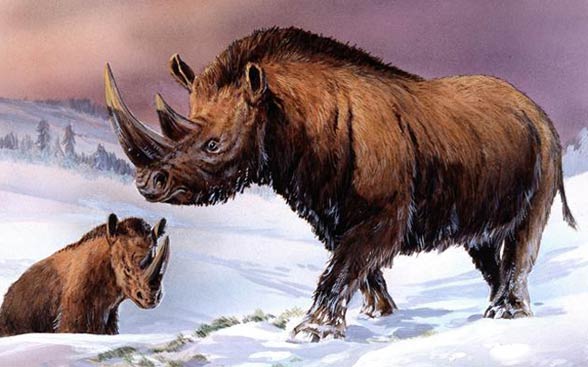
Exact information
Woolly rhinoceros (Coelodonta antiquitadis)
- Body length: 3-3.8 m (9.8-12.4 ft)
- Height at shoulders: 2 m (6.5 ft)
- Weight: 1.8-2.7 t (3,970-5,950 lb)
- Dating: 3.6 million – 10 000 years ago (Late Pliocene – Late Pleistocene)
- Distribution: whole Europe, North Asia, the Himalayas

Woolly rhinoceros – interesting facts:
- The species name Coelodonta means ‘cavity tooth’.
- The woolly rhinoceros is one of the rare species whose image was found in caves in western Europe (Chauvet-Pont-d’Arc Cave in France). Cave paintings helped scientists to recreate the appearance of the Pleistocene mammal.
- In the Museum of Nautral History of the Institute of Systematics and Evolution of Animals of Polish Academy of Sciences (PAN), there is an exhibit presenting the mummified body of the rhino found in the Ukrainian village, Starunia, in 1929.
- In 2012, the tooth and the bone of the metatarsus were found in the riverbed of Dunajec river (Poland).
- Species representatives of Elasmoterium (which also belong to the rhinoceros family) were the close relative of the woolly rhinoceros.
- Woolly rhinoceros horns, which were found in the XIX century in Russia, were often described as the claws of huge birds.
- Recent research reveals that the woolly rhinoceros also used to live in Arctica.

Recommended
- Extinct animals
- Rhinos
- Arsinoitherium
- Elasmotherium
- Archaeopteryx
- Sarcosuchus
- Deinosuschus
- Animals & dinosaurs records
- The fastest animals – Top 100
- The fastest birds – Top 10
- The heaviest dinosaurs – Top 10
- The longest dinosaurs. Sauropods Top 10
- The longest predatory dinosaurs. Theropods Top 10
- The heavies predatory dinosaurs Top 10
- The longest and largest ornithopods
- The longest and largest ceratopsians
- The shortest sauropods
- The smallest dinosaurs – Top 10

